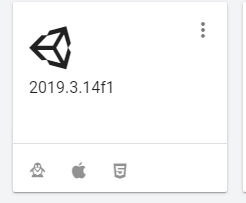Hugo Guide for Writing Blog Posts
DISCLAIMER: If you aren’t from my hugo tutorial, please read my Hugo setup tutorial
Table of Contents
New Machine Setup
In case you want to blog on a new device, here are the commands to set yourself up.
# replace USERNAME/blog with your username and blog repo name
git clone --recurse-submodules -j8 https://github.com/USERNAME/blog.git
git config --global submodule.recurse true
# choose cloned directory
cd blog
Creating Content (e.g. a Post)
Before writing, make sure you are modifying the latest version of the blog. Use git pull --rebase. The first reason to do so, is if we are working on multiple devices, we do not want to run into some sort of merge conflict when we want to push our updates. The second reason is because the auto-deploy script can also commit updates to the theme, so we want to ensure that we aren’t going to mess the remote state up.
-
In a terminal working in your repo directory, use the command
hugo new posts/POST.mdor if you plan on using imageshugo new posts/POST/index.md(see Adding Images)- “POST” name is arbitrary
-
Open
content/posts/POST.mdin a text editor (e.g. VS Code) -
Edit the metadata fields present and optionally add others found in this file (e.g. tags, hidden)
- I use tags, but categories is also a thing
hidden: truemakes posts unlisted (similar to youtube’s unlisted)draft: truemakes posts viewable only if you use-Dwith thehugoCLI (build or serve)summary: set the description for posts that search engines list
-
Here is a Markdown Guide for writing your posts
-
To see your changes locally, run
hugo serve -Dand go to http://localhost:1313/- Run once, it will auto-serve any new changes
- To view this specific guide, go to http://localhost:1313/hugo-guide
-
To deploy your edits, if you have my pre-commit hook enabled, run
git add . && git commit -m "Created/Edited POST" && git push- I suggest using a GUI like VS Code or GitHub Desktop as there is less typing involved
-
TECHNICAL: The pre-commit hook updates the theme and builds your posts before committing
git submodule update --remote --merge hugo -d docs
You can use VSCode’s git UI to commit and push. If you are editing your blog from multiple devices, I suggest you use branches and pull requests. For example, from my surface laptop, I edit my blog in a branch like surface/YYYY-MM-DD and then push commits, and then use the “Rebase and merge” feature once I’m back on my main computer. This is because I extensively rewrite my commits.
Including a Table of Contents
To include a Table of Contents, use {{< toc >}} (custom shortcode)
Images
To embed an image in markdown use.

make sure the image is under the static/images directory. I organize images based on the post or tag they
are related to, so I suggest putting the image in static/images/crypto/monero.webp or static/images/about/headshot.webp. I suggest using webp over png as webp provides better compression.
To embed this image, add something like the below.

For aligning images, you can check out https://davidwells.io/snippets/how-to-align-images-in-markdown and https://stackoverflow.com/questions/255170/markdown-and-image-alignment.
Custom Pages
Pages such as /about can be added by editing your config.yaml like below and using hugo new page.md
menu:
main:
...
- identifier: about
name: About
title: About
url: /about/
weight: 0
Adding Images
Basically add the image to the same directory that posts/POST/index.md was created in.
{{ $image := .Resources.Get "sunset.jpg" }}
Or if you add images to assets/images,
{{ $image := resources.Get "images/sunset.jpg" }}
Then you need to render the variable image which can be done in multiple ways.
Link Preview Images
Default
THIS DOES NOT WORK.
If your post directory has images, the ordering is: *feature*, *cover*, *thumbnail*.
If your post directory has no images, Hugo will try to use the first image found in your hugo.yaml under images
Shared Feature
If your post doesn’t use any images and you have multiple posts that use the same feature image
images:
- assets/images/feature.png
Link Embeds & Shortcodes
For those times where embedding links makes a better point than simply posting them, we can do use hugo shortcodes. Here are some common ones I use. For more, you can search google or something “Hugo SERVICE shortcode.”
From https://twitter.com/MPelletierCIO/status/1522704947556483073. We need the username and the status id:
{{< tweet user="MPelletierCIO" id="1522704947556483073" >}}
To American followers, you absolutely have to see this. pic.twitter.com/JvJELoDHAy
— Martin Pelletier (@MPelletierCIO) May 6, 2022
YouTube
An old video of mine https://www.youtube.com/watch?v=rtSR9ySQ5h4 or https://youtu.be/rtSR9ySQ5h4. We just need the video id.
{{< youtube rtSR9ySQ5h4 >}}
Gfycat
2023: Wow this service got shut down. Skip this section.
This one is a custom shortcode, but we just need the id of the gfycat link.
{{< gfycat arcticbigheartedaddax >}}
GitHub Gist
{{< gist elibroftw 1a94149a2f6232d062b666c4ee9ea530 >}}
How to Write Footnotes
Footnotes appear in numeric order and are linked via the same tag used for the footnote. So you could use letters for a tag, but the render will still show numbers for the footnote. This is useful because you can write the footnote in markdown at the end of a paragraph rather than at the bottom of the article, so instead of scrolling to remember what the number is, you can put a unique tag, and the markdown render will show that markdown footnote at the bottom of the document with the proper numbering.
This is how you write footnotes in Markdown/hugo[^1]
[^1]: [text](https://name.tld)
This blog is a git repo on GitHub1. This blog is a git repo on GitHub2